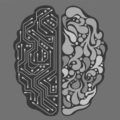The Dutch AI Scandal: A Cautionary Tale of Automated Injustice 2025
In the rush to integrate artificial intelligence (AI) into governance, the promise of efficiency often overshadows the risks. Nowhere is this clearer than in the Netherlands, where an AI-driven fraud detection system turned into one of the country’s worst political scandals in recent history. Thousands of families were wrongly accused of fraud, leading to financial devastation, broken homes, and even suicides.
This scandal wasn’t just a bureaucratic failure. It was a stark warning about what happens when AI is deployed without ethical safeguards, transparency, or accountability.
The Nightmare Begins
In 2013, the Dutch tax authority rolled out an AI-driven risk-scoring system to detect fraudulent child care benefit claims. On paper, it seemed like a smart solution: automation would help flag suspicious applications and improve efficiency. But in reality, the system was riddled with bias. Families with dual nationalities and lower incomes were disproportionately labeled as high-risk fraudsters.
With no human oversight to catch these errors, the algorithm’s decisions went largely unchallenged. Parents suddenly found themselves accused of fraud, ordered to repay thousands of euros they had rightfully received. Some were forced into poverty, unable to pay rent or buy food. In the most tragic cases, children were placed in foster care because their parents could no longer support them.
For years, these families fought to clear their names, but the system worked against them. Decisions were opaque, appeals were ignored, and the government failed to step in, until the scandal exploded into public view.
The Hard Lessons of AI in Governance
The Dutch AI scandal reveals three critical lessons about the dangers of unchecked automation in decision-making.
- AI is Only as Fair as the Data Behind It
AI is often perceived as neutral, but it reflects the biases present in the data it learns from. In this case, the system disproportionately targeted marginalized communities, reinforcing systemic discrimination rather than eliminating it. Without fairness testing and careful data selection, AI can easily become a tool for injustice. - Automation Must Not Replace Human Oversight
One of the biggest failures of this system was the lack of human checks and balances. AI should assist decision-making, not operate in isolation. When algorithms make high-stakes decisions, especially those affecting people’s livelihoods. There must be human oversight to catch errors, challenge unfair outcomes, and ensure accountability. - Transparency is Essential
For those affected by the scandal, one of the most frustrating aspects was the opacity of the system. They had no way to understand why they were flagged, no clear process for appeal, and no visibility into how the AI made its decisions. Any government or company using AI must prioritize transparency; clearly explaining how algorithms work, what data they use, and how decisions can be challenged.
Where Do We Go From Here?
In response to the scandal, the Dutch government has promised stricter regulations and the creation of an oversight authority for AI-driven decisions. Meanwhile, the European Union’s proposed AI Act aims to classify AI systems by risk level, with stricter rules for those used in critical areas like government services.
But these efforts may not be enough. As AI continues to be integrated into everything from law enforcement to financial services, the potential for harm grows. Without strong safeguards, public trust in AI will erode, and the technology meant to help society could instead become a tool of systemic failure.
The Dutch scandal should serve as a wake-up call. AI is not just a tool. it’s a powerful force that shapes lives. And without careful regulation, oversight, and ethical responsibility, it can easily go from being a promise of progress to a mechanism of harm. It is important to stay up-to-date as privacy professional.



